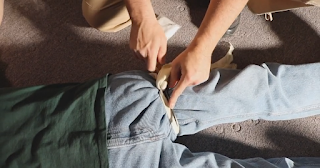Did you know the average active shooter event lasts 3-5 minutes, but it takes EMS and police about 10 minutes to show up?
How can you treat the injured before EMS arrives?
The majority of the wounds you’ll see during an active shooter event include some degree of blood loss. You must address major blood loss first before other injuries. Remember, every second counts!
How to Fashion a Tourniquet
Tourniquets are a great way to stop blood loss from a limb and can be created with household objects. A tourniquet consists of 3 components: a loop, stick, and lock. For the loop, you can use items like belts, ties, and computer cables. The stick can be a remote, a pair of metal scissors, or any straight, rigid object around 6 inches long.
First, you must tie the stick in place over the bleeding extremity to keep it from unraveling. Go as high on the extremity as possible and tie an overhand knot. Apply the stick and tie another overhand knot. Twist the stick and apply pressure. Once the blood flow has stopped, secure the stick.
Never apply a tourniquet over a knee or elbow. If these areas are bleeding, place the tourniquet a few inches above the joint. Check on your tourniquet frequently to make sure it’s still working, but never remove it.
Learn other ways to stop bleeding.
Create an Active Shooter Response Plan for Your Workplace
To some, it might seem unnecessary to learn how to respond to injuries because they believe their risk of an active shooter event is low. Risk is not just about probability - it’s a combination of probability, vulnerability, and consequences. Use this formula to get a true picture of your risk.
It’s your duty to prepare your workplace and keep your staff safe. You can teach your staff what to do in preparation of an active shooter event or other type of workplace violence with online training. TPOP’s active shooter preparedness training will help you create an active shooter response plan customized for your workplace.
Let’s talk today about your company’s risk.











